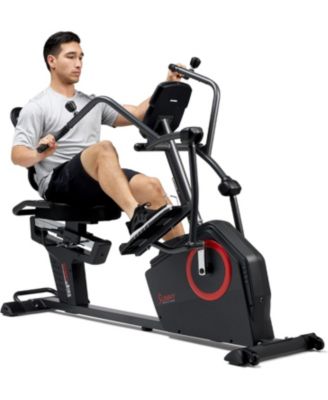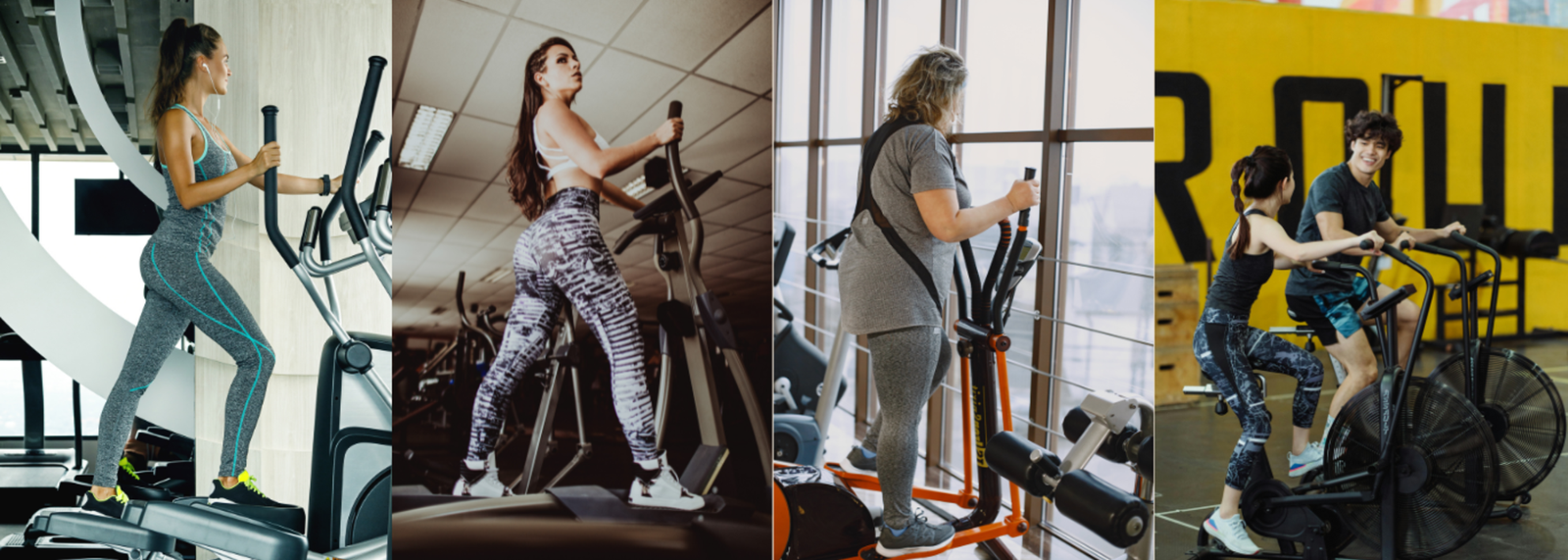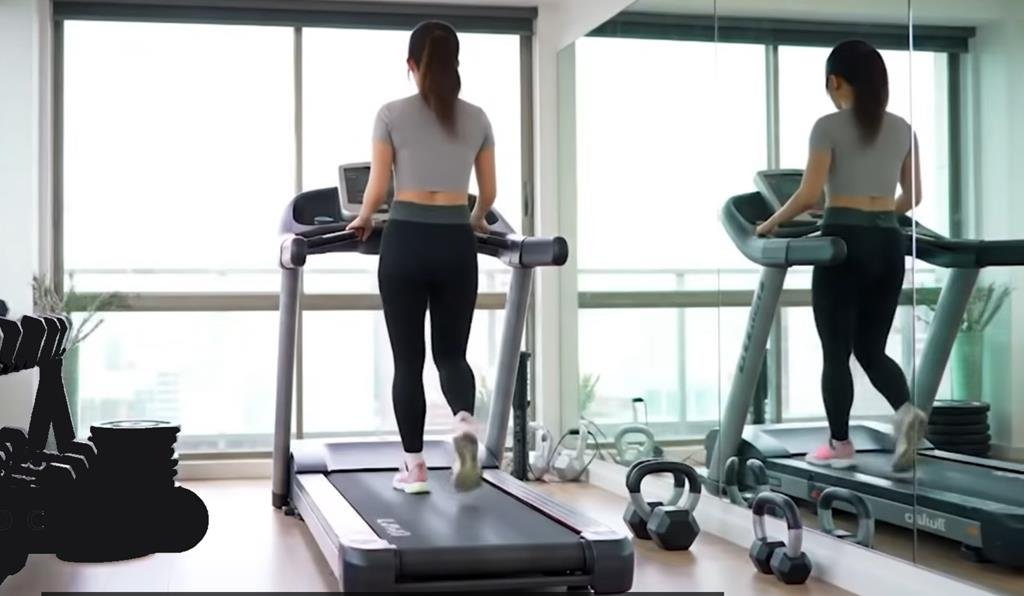Are you struggling with knee pain but still want to stay active and fit? You’re not alone.
Many people face the challenge of finding the right exercise that doesn’t aggravate their knees. This is where an elliptical machine might just be your perfect workout partner. You might have heard whispers about its benefits for those with bad knees, but is it true?
Can an elliptical really help you maintain your fitness without causing further discomfort? We’ll dive into why this popular gym equipment could be a game-changer for you. By the end, you’ll have a clear understanding of whether hopping on an elliptical is the right choice for your knees and overall health. Keep reading to discover how you can protect your knees while achieving your fitness goals.

Elliptical Basics
Elliptical machines offer a low-impact workout. They help people exercise without stressing their knees.
Many wonder if ellipticals are good for bad knees. Understanding how they work helps answer this question.
How Ellipticals Work
An elliptical machine moves your feet in an oval path. This motion mimics walking or running but without harsh impact.
The pedals move smoothly, reducing stress on joints. The handles also help work your arms and improve balance.
- Feet move in a smooth, elliptical motion
- Hands hold moving handles for upper body workout
- Low-impact design protects knees and joints
Types Of Elliptical Machines
Elliptical machines come in several types. Each type offers a different motion and workout style.
Choosing the right type depends on your needs and knee condition.
- Rear-Drive Ellipticals:The flywheel is behind the pedals. They offer a natural stride.
- Front-Drive Ellipticals:The flywheel is in front. They are usually smaller and more affordable.
- Center-Drive Ellipticals:The flywheel is under the pedals. They provide a compact design and good balance.
- Cross-Trainers:These combine elliptical motion with stepping or climbing actions.

Knee Health And Exercise
Many people worry about exercise and knee pain. Choosing the right workout helps protect your knees. Elliptical machines are popular for low-impact exercise.
This article looks at common knee problems and how exercise affects knee health. It helps you decide if an elliptical is good for bad knees.
Common Knee Problems
Knees often hurt because of injuries or wear over time. Some common problems are:
- Osteoarthritis – cartilage wears down causing pain and stiffness
- Patellar Tendinitis – inflammation of the tendon below the kneecap
- Meniscus Tears – damage to the cartilage that cushions the knee joint
- Runner’s Knee – pain around the kneecap from overuse
- Bursitis – swelling in the small fluid-filled sacs near the knee
These problems may make some exercises painful or harmful. Low-impact workouts are better for damaged knees.
Impact Of Exercise On Knees
Exercise can help or hurt your knees depending on the type and intensity. Low-impact exercise reduces stress on the joints.
| Exercise Type | Impact on Knees | Notes |
| Running | High | May worsen knee pain in some people |
| Walking | Low | Good for most knee problems |
| Swimming | Very Low | Supports body weight, gentle on knees |
| Elliptical Machine | Low | Offers smooth motion, reduces joint stress |
| Cycling | Low | Strengthens muscles around the knee |
The elliptical machine moves your legs in a smooth, circular path. This lowers knee joint stress. It also strengthens muscles that support the knee.
Tips for using an elliptical with bad knees:
- Start slow and low resistance
- Keep proper posture to avoid strain
- Stop if you feel sharp pain
- Use the handles for balance
Elliptical Benefits For Knees
Elliptical machines offer a way to exercise without hurting your knees. They help people with knee problems stay active.
This exercise tool supports knee health by reducing stress and building strength. It is often recommended for those with bad knees.
Low Impact Motion
The elliptical moves your legs in a smooth, circular motion. This motion is gentle on knee joints and avoids hard impacts.
Unlike running or jumping, the elliptical keeps your feet on the pedals. This lowers the chance of knee pain or injury.
- Reduces pressure on knees
- Prevents joint jolts
- Supports steady, controlled movement
Muscle Strengthening
Using an elliptical works many leg muscles. Strong muscles help support and protect the knees.
It targets the quadriceps, hamstrings, and calves. These muscles reduce stress on the knee during daily activities.
- Builds thigh muscles
- Strengthens calf muscles
- Improves overall leg support
Improved Joint Mobility
Elliptical exercise helps joints move smoothly. It keeps the knee joint flexible and healthy.
Regular use can reduce stiffness and improve range of motion. This makes walking and bending easier.
- Increases knee flexibility
- Reduces joint stiffness
- Supports better movement daily

Potential Risks With Ellipticals
Elliptical machines are popular for low-impact exercise. They seem safe for people with bad knees. Still, there are some risks to know.
Using an elliptical wrong or too much can cause knee problems. It is important to understand these risks to protect your knees.
Overuse Injuries
Ellipticals repeat the same motion many times. This can strain your knees if you use it a lot. Overuse can cause pain and swelling.
People with weak knees may feel more discomfort. Rest days are important to let your knees heal. Watch for signs of soreness or stiffness.
- Knee pain after exercise
- Swelling around the joint
- Stiffness when moving
- Increased discomfort over time
Incorrect Form Issues
Bad posture or wrong foot placement can hurt your knees on an elliptical. Leaning too far forward or backward adds pressure. This can strain the knee joint.
Using too much resistance or pedaling too fast may also cause problems. Keeping your form correct helps protect your knees from damage.
- Keep your back straight
- Place feet flat on pedals
- Use moderate resistance
- Pedal at a steady, comfortable pace
Choosing The Right Elliptical
Choosing the right elliptical machine is important if you have bad knees. The right machine can help you exercise safely and comfortably.
Not all ellipticals are made the same. Some have features that protect your knees better than others.
Features For Knee Support
Look for an elliptical that reduces stress on your knees. Smooth, low-impact motion is key to protect your joints.
Machines with good knee support keep your legs aligned and avoid sudden movements that cause pain.
- Low-impact pedals reduce joint strain
- Stable foot platforms prevent slipping
- Proper stride length fits your natural step
- Quiet and smooth motion lowers shock
Adjustability And Comfort
Adjustable features help you find the right fit and reduce knee pain. Comfort keeps you motivated to exercise regularly.
Choose ellipticals with easy controls to change resistance and stride length. This lets you work within your pain limits.
- Adjustable stride length to match your leg size
- Variable resistance levels for gentle workouts
- Padded, non-slip pedals for foot comfort
- Ergonomic handles to support balance
Using An Elliptical Safely
Using an elliptical machine can be a good exercise choice for people with bad knees. It offers low-impact movement that helps protect your joints.
To avoid injury and get the most benefits, it is important to use the elliptical safely. Follow these tips to protect your knees and improve your workout.
Warm-up And Cool-down Tips
Warming up prepares your muscles and joints for exercise. Cooling down helps your body recover and reduces stiffness.
Start with slow, gentle movements on the elliptical for 5 to 10 minutes. After your workout, slow down again for 5 to 10 minutes to cool down.
- Begin with low resistance
- Keep your movements smooth
- End with slow pace to relax muscles
Proper Foot Placement
Place your feet flat on the pedals to keep your knees safe. Avoid pointing toes up or down too much. This helps reduce stress on the knee joints.
Keep your feet centered and aligned with your hips. This keeps your knees tracking correctly during the movement.
- Keep feet flat on pedals
- Align feet with hips
- Maintain steady pedal contact
Recommended Duration And Intensity
Start with short workouts, about 10 to 15 minutes. Increase time slowly as your knees get stronger. Aim for 30 minutes per session over time.
Use low to moderate resistance to avoid strain. Keep a steady pace where you can still talk comfortably. Stop if you feel pain or discomfort.
- Begin with 10-15 minutes per session
- Increase to 30 minutes gradually
- Use low to moderate resistance
- Keep a comfortable pace
- Stop if you feel pain
Alternatives To Elliptical Machines
Elliptical machines are popular for low-impact workouts. They are often recommended for people with bad knees. Still, some may need other options that feel easier on the joints.
Here are some good alternatives to ellipticals. These exercises help keep you active without causing pain in your knees.
Swimming And Water Aerobics
Swimming is one of the best exercises for bad knees. Water supports your body weight. This reduces pressure on your joints. Water aerobics also adds gentle resistance to build strength.
- Helps improve heart health
- Builds muscle without strain
- Increases flexibility and balance
- Suitable for all fitness levels
- Can be done in a pool or shallow water
Stationary Biking
Stationary biking offers a smooth, low-impact workout. You can adjust the seat height and resistance to avoid knee pain. It helps strengthen leg muscles and improves endurance.
| Benefit | Details |
| Low Impact | Reduces joint stress compared to running |
| Adjustable Resistance | Lets you control workout intensity |
| Controlled Movement | Limits sudden knee strain |
| Improves Leg Strength | Targets muscles around the knee |
Walking And Hiking
Walking is simple and effective for bad knees. Hiking adds variety with gentle hills and fresh air. Both activities strengthen your legs and improve your mood.
Tips for safe walking and hiking:
- Wear supportive shoes
- Choose flat or gently sloping paths
- Start with short distances
- Walk on soft surfaces like grass or dirt
- Use walking poles for balance
When To Consult A Doctor
If you have bad knees, exercise can be tricky. Using an elliptical machine is often gentle. Still, knowing when to see a doctor is important.
Pay close attention to any pain or discomfort while using the elliptical. Some signs need a professional check.
Signs Of Knee Pain During Exercise
Notice if your knees hurt during or after exercise. Sharp, constant, or swelling pain should not be ignored.
- Sharp pain in or around the knee
- Swelling that lasts hours or days
- Difficulty bending or straightening the knee
- Feeling instability or the knee giving out
- Stiffness that limits movement
These signs mean your knees might be stressed or injured. Stop exercising and consider medical advice.
Professional Assessment And Guidance
Doctors or physical therapists can check your knee health. They use tests and exams to find the problem.
They can suggest safe exercises or treatments. A professional plan helps protect your knees during workouts.
- Medical exam and knee evaluation
- Imaging tests like X-rays or MRI
- Advice on safe workout routines
- Rehabilitation or physical therapy
- Possible use of braces or supports
Frequently Asked Questions
Is Elliptical Exercise Safe For Bad Knees?
Yes, elliptical machines provide low-impact workouts that reduce knee stress. They help improve joint mobility without harsh impact, making them safe for bad knees.
How Does Elliptical Help Knee Pain Relief?
Elliptical trainers promote smooth, controlled motion that strengthens muscles around the knee. This support reduces strain and can alleviate chronic knee pain effectively.
Can Elliptical Machines Worsen Knee Problems?
When used correctly, ellipticals rarely worsen knee issues. Proper form and moderate intensity are key to preventing aggravation of knee conditions during exercise.
What Features To Look For In An Elliptical For Bad Knees?
Look for adjustable resistance, stride length, and cushioned pedals. These features help customize workouts, ensuring comfort and minimizing knee joint stress.
Conclusion
Elliptical machines offer low-impact exercise for those with bad knees. They help strengthen muscles without putting stress on joints. You can adjust speed and resistance to match your comfort. Regular use may improve knee mobility and reduce pain. Always listen to your body and stop if pain worsens.
Consult a doctor before starting any new workout. Ellipticals can be a safe, gentle way to stay active. Small steps lead to better knee health over time.



